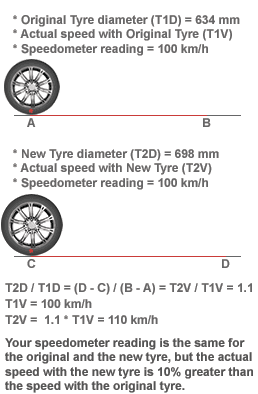
28 Apr Difference between distance by GPS and by onboard milage
In this article we are about to examine the main reason for the difference between the distance reported by GPS and respectively by the on-board computer mileage readings, since in the program GPS Logistic these are two different parameters, collected by the GPS tracking devices.
First of all, it is good to clarify what does the term “distance travelled by GPS” mean. The trackers are configured by default to make vehicle’s position records every 20-30 seconds and for clients, that use the toll declaration service – every 10 seconds. The system connects all the points that the tracker has “drawn” on the map for certain period of time in order to form the distance travelled and turn the points into a solid route with a start, an end and a direction. Logically, the more the vehicle’s route is in a straight line, the more accurate the distance detected by the GPS will be and the more curves there are on the road, the less accurate the distance detected by the GPS will be.
Secondly, it is necessary to explain how does the travelled distance, calculated by the on-board computer mileage, is processed in GPS Logistic. The devices collect vehicle’s mileage data over a certain period of time by the CAN bus interface – an option available for most of the vehicle brands. In this way the system understands that the vehicle has been in point A with mileage reading, for example – 100 251 km., and in point B the same parameter was 100 256 km. Therefore, the conclusion is that the distance travelled from point A to point B is 5 km. This logic is valid for any period of time that we would like to analyze.
GPS Logistic gives the fleet managers an opportunity to observe both of these travelled distance indicators, but one question arises: Which one is more accurate? The answer, however, is not definitive, because they both have pros and cons. We are about to examine part of them in this article.
The accounting departments prefer the travelled distance readings to be based on monthly start/end mileage. This is a good accountancy method, but however, the practice shows it is not always possible. We have three basic reasons why it is not applicable in every situation. The first reason is some older vehicles do not have compatibility with the CAN bus interface and therefore the on-board computer mileage is not accessible for monitoring. In this case only the showings of the GPS parameters are usable. The second one is when the vehicle’s mileage is not showing correct readings either because it is broken or there has been an outside mechanical interference. In this case again the showings are most accurate if they are based on the GPS data. The third reason is the most complicated one, so we are going to use an example and a picture.

The picture shows how with 2 different tire sizes the developed real speed of the car will differ since the nominal speed (the one showed on the speedometer) is based on the count of the rotations of the tire. The same is valid towards the travelled distance based on the vehicle’s mileage. Hypothetically, the manufacturer of a certain brand of vehicles have detected that with standard 13-inch tires the vehicle travels 1 km. after 970 tire rotations. Changing the tires to 15-inch ones would take the tires to rotate 840 times in order the vehicle to pass 1 km. Therefore, if we change the 13-inch with 15-inch tires a specialized on-board computer configuration must take place. The distance correction has to be with coefficient -13% so that 1 km. travelled with the smaller tires would correspond to 1 km. travelled with the bigger tires. The same coefficient correction finds its application in the system GPS Logistic when it comes to equaling mileage and GPS distance readings, depending on the vehicle’s specifications. The practice shows that deviations around +/-5% are acceptable and even expected when coefficient correction of the distance is not applied.
It is worth to mention some of the reasons for possible GPS distance reading inaccuracies. We have already described the first reason above in the article – this is the presence of many turns on the vehicle’s route. In order the distance calculation to be more precise in this scenario, more regular GPS position reports are required, and if we are talking about GPS navigation this is essential, but the purpose of the GPS monitoring is different. The second reason for possible deviations is the presence of signal interruptions/interferences, which could be caused by passing through tunnels or there could be a problem with the proper functioning of the device. We are doing our best to identify and repair faulty tracking devices as soon as the vehicles are accessible.
In summary, both travelled distance tracking methods – by GPS and by on-board computer mileage – could be used together, completing each other in order to have more precise data analysis. Our practice knows cases in which 2 identical brands of trucks travel the same course every day, but they show different travelled distance with the same settings in the GPS system. We resolved this case by checking what was the exact distance of the performed course – using navigation software – and then we have added coefficient correction for GPS-based distance calculation for both of the trucks. In this way the distance became accurate and, consequnelty, the drivers got reciprocal payments for the job they have completed. As often happens in our work – every case is specific and must be dealt as such.

